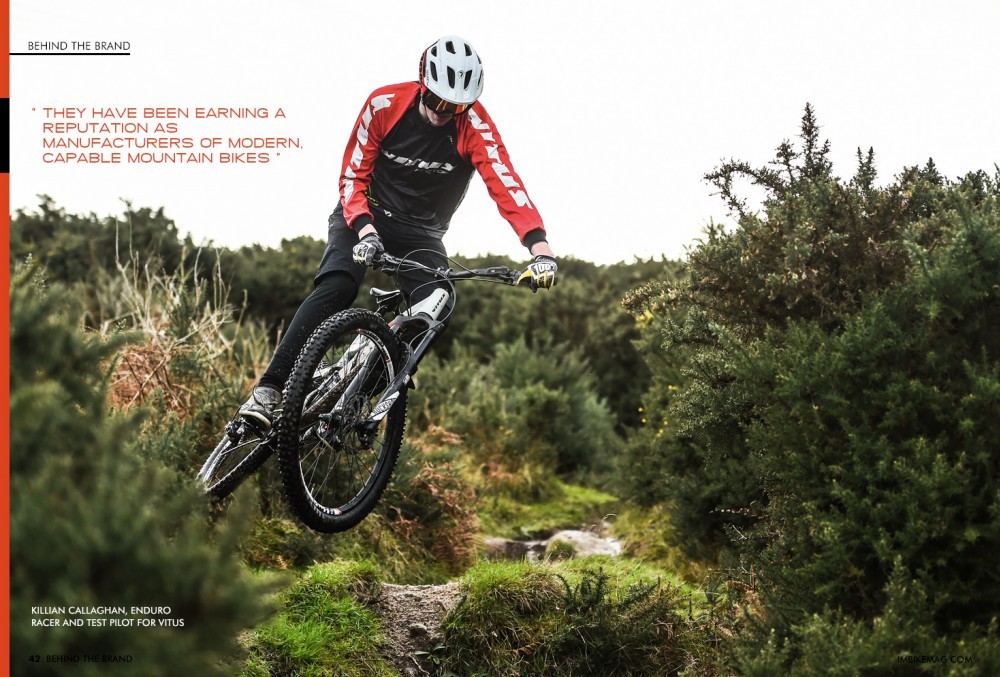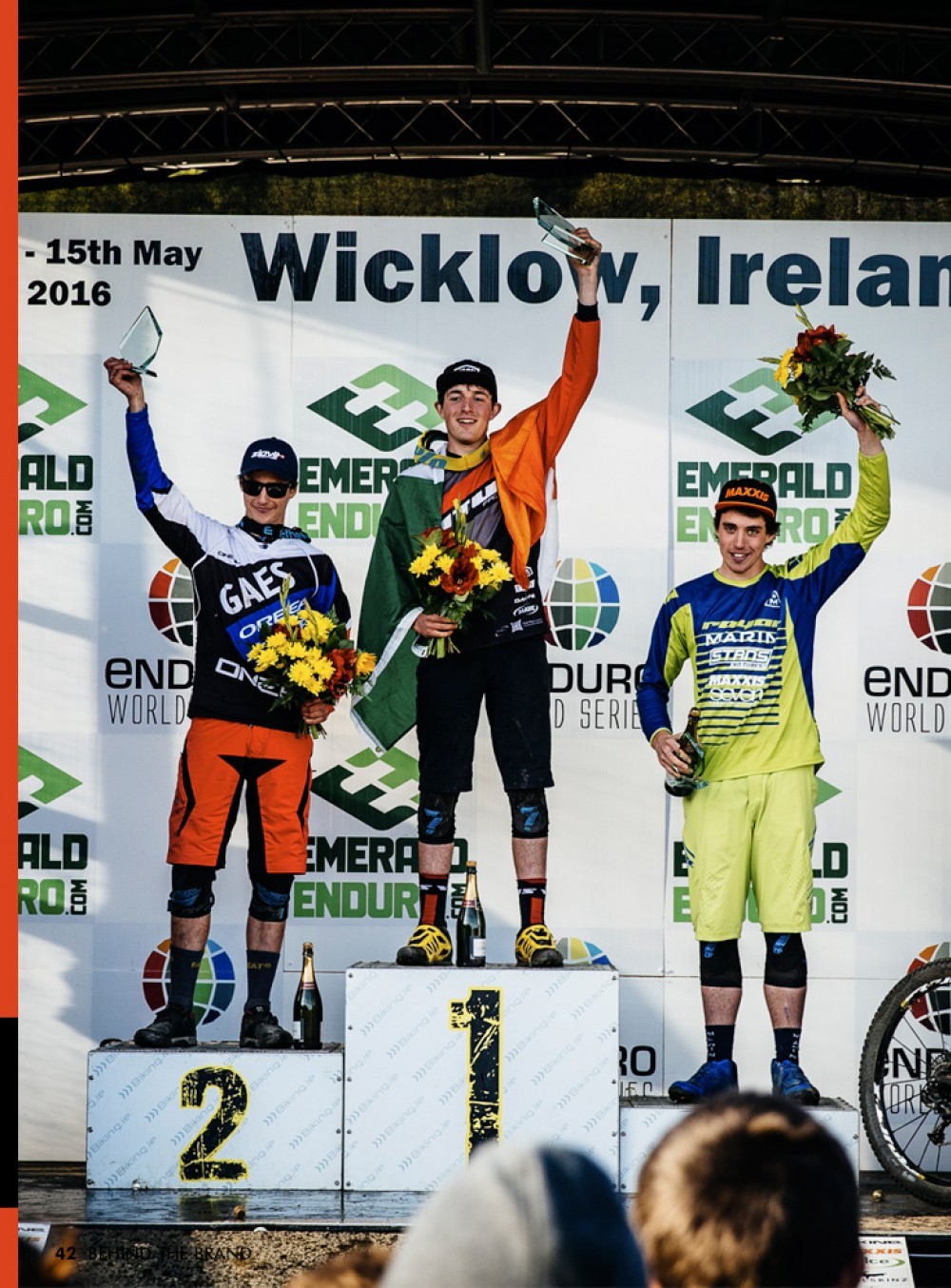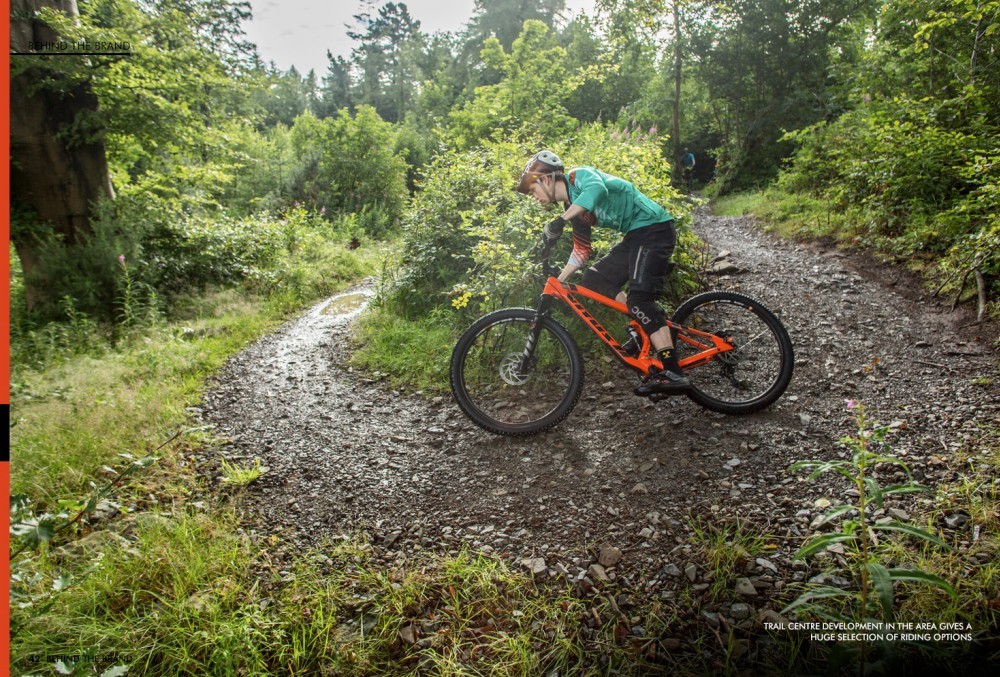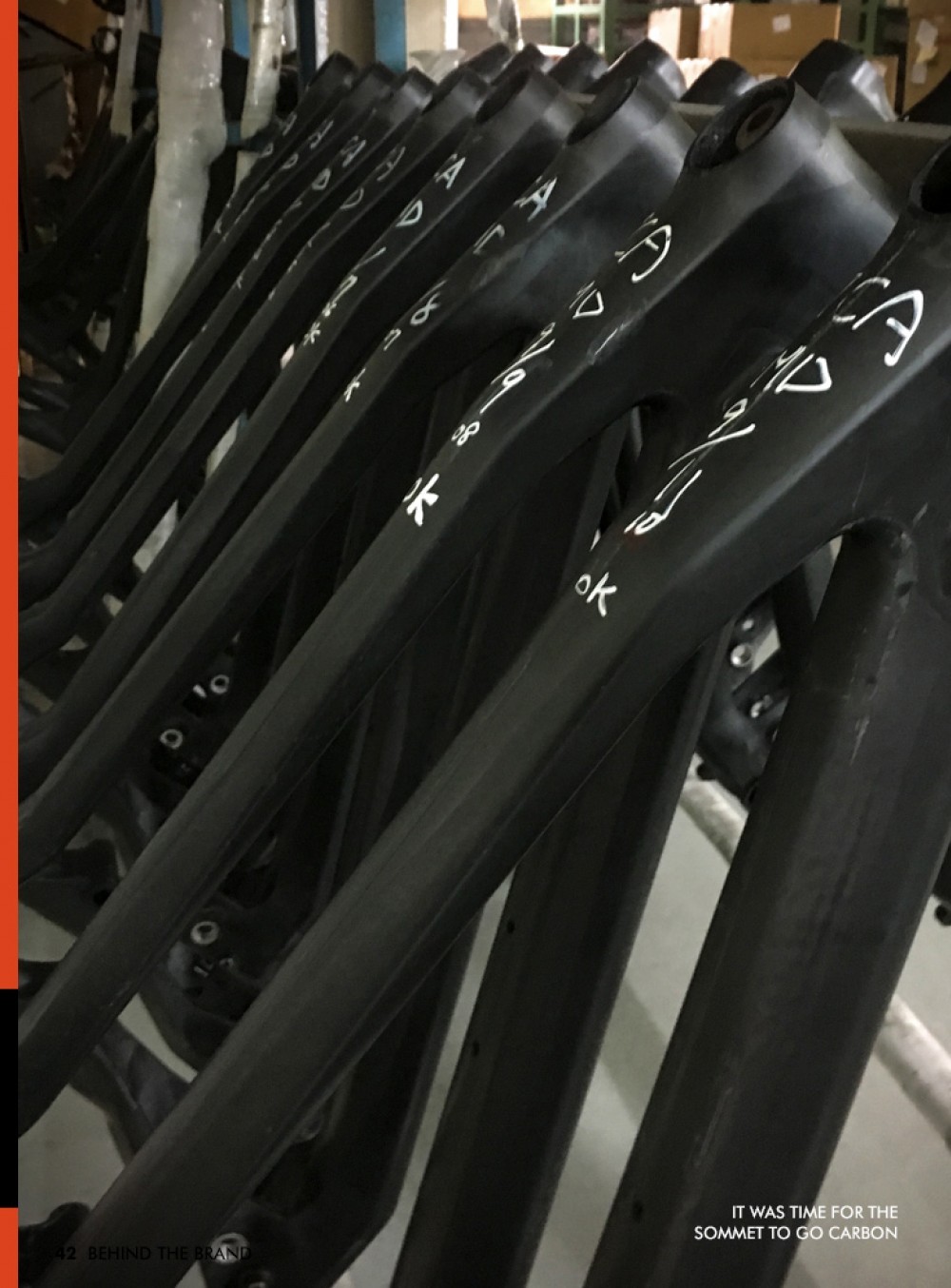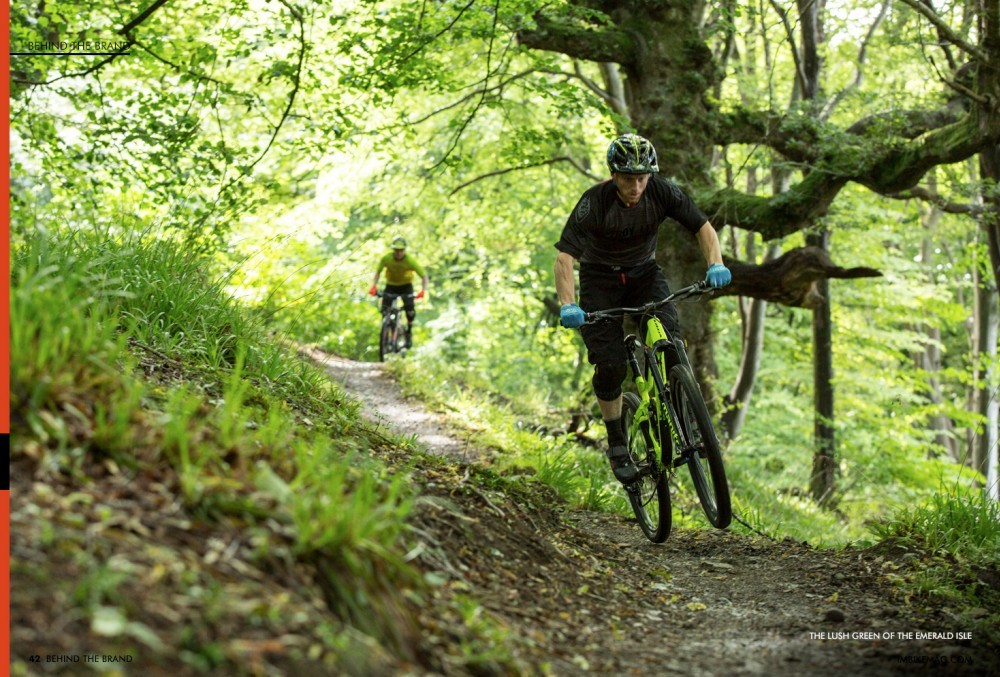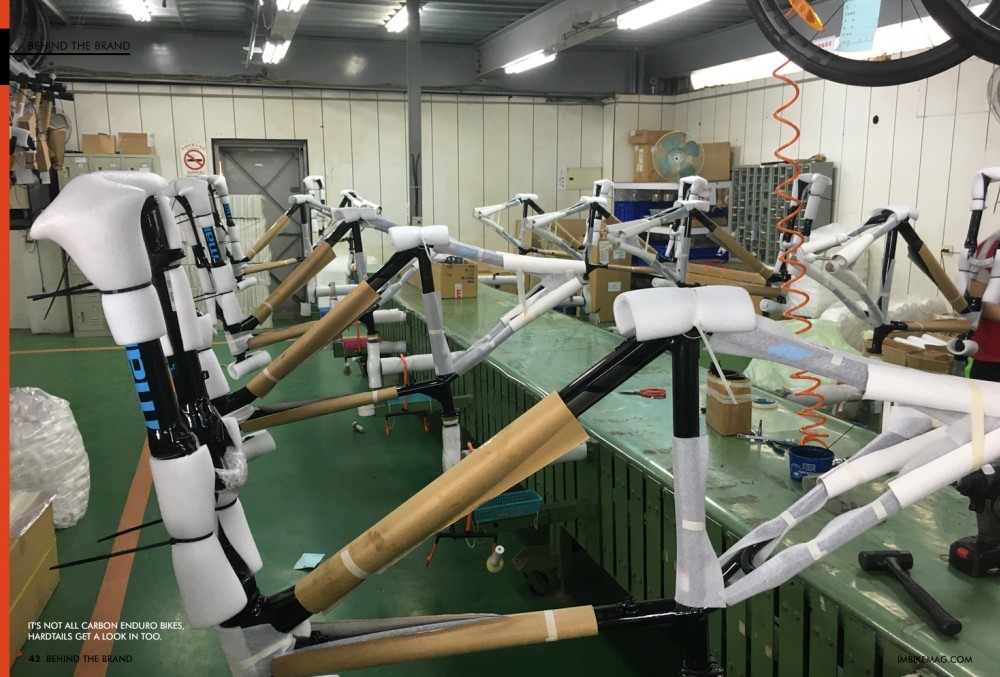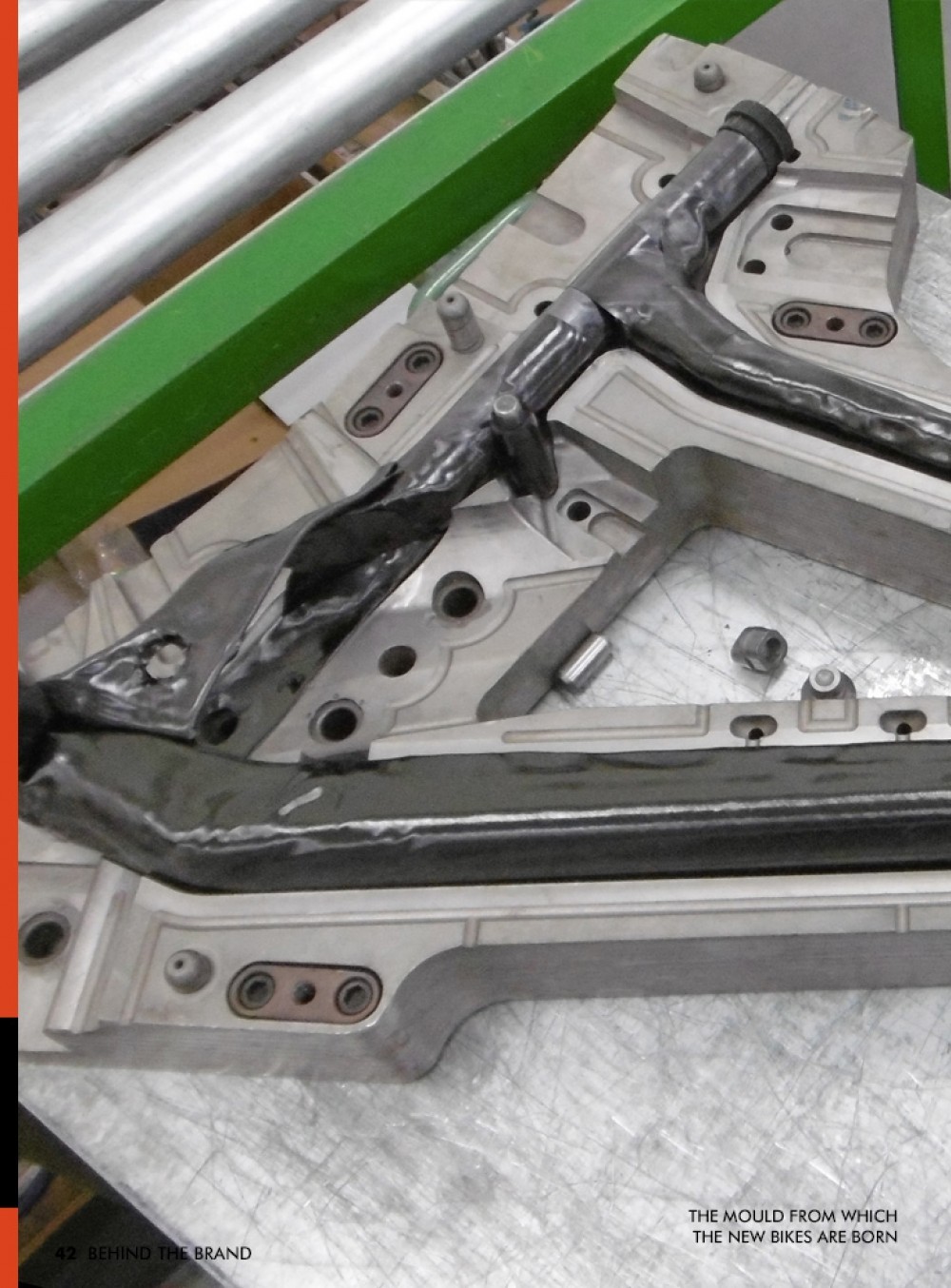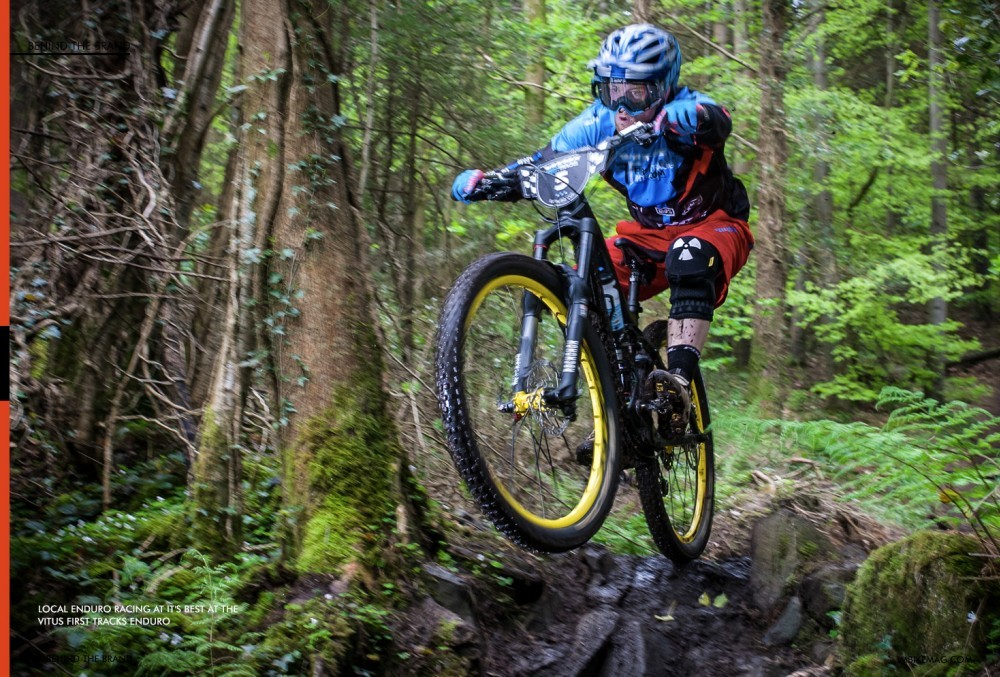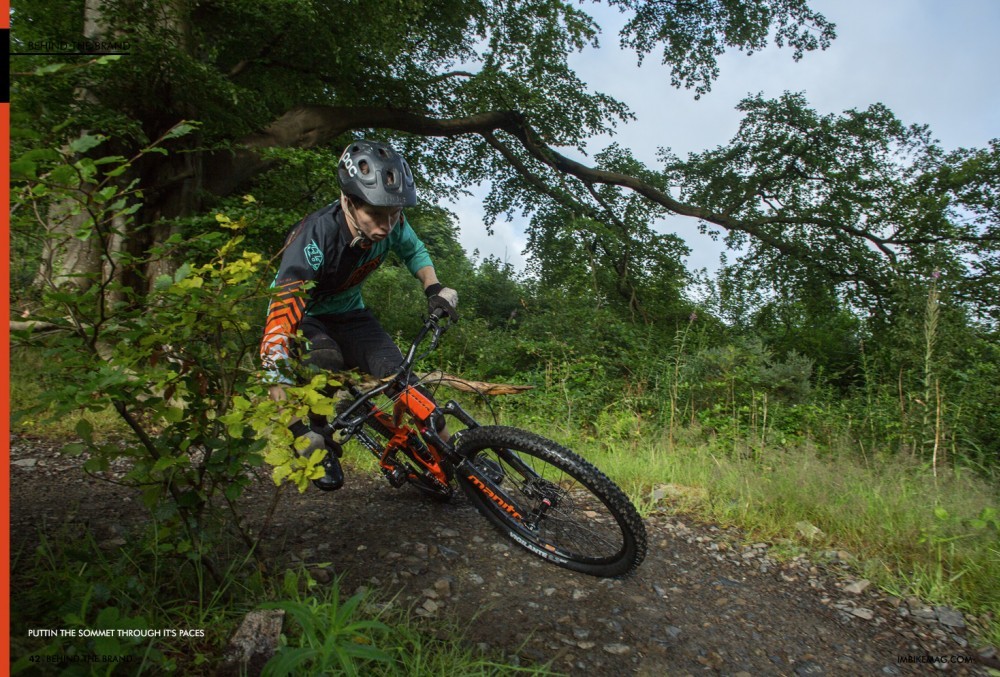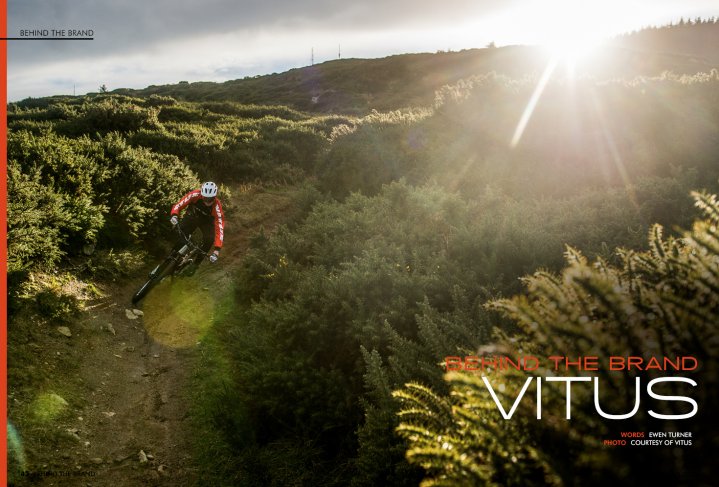
Behind the Brand - Vitus
Issue 42 / Sat 25th Jun, 2016
This month we head to Ireland and chat to Vitus, a brand that has gone through some huge changes from it's road roots, to emerge as a serious contender in high performance mountain bikes.
My first experience of Vitus bikes was last year, when I swung a leg over their Escarpe 29er, and was instantly hooked. A medium travel big wheeler with modern geometry and a great spec, it was a fantastic ride. Looking back it's clear that they were ahead of the curve, as this year has seen a boom in the 29er trail bike market. Vitus is a bike brand that is most definitely on the rise, having been quietly reinventing themselves over the past few years.
Perhaps not as well know as the big global players, they have been earning a reputation as manufacturers of modern, capable mountain bikes at affordable prices. With increasingly good results from their sponsored riders, and bikes receiving rave reviews, the future is looking bright. Most recently we've seen a move to a carbon frame for their Sommet enduro bike, a sure sign they mean business and are serious about pushing technology forward.
Although they may be part of the Chain Reaction family, they still manage to retain their own identity and heritage, having both a strong commercial focus while maintaining strong links with their local riders, trails and race scene. We caught up with Ian McIntyre, David Pattern and Dale McMullen from Vitus to find out more about the brand, bikes, racing and the future.
Vitus started in France in the 70's yes? How has a French road brand ended up in Ireland making carbon enduro bikes?
You are right; Vitus has a proud history that dates back to the 1970’s when it was one of the top road brands using innovative lug bonding techniques to develop very lightweight frames. The French company developing Vitus bikes lost its way, and Chain Reaction Cycles purchased the brand in 2008. Since that time we have been building the brand across MTB and Road by developing better and better frames and bikes. To be making top quality carbon framed enduro bikes shows that we are restoring the reputation that Vitus had in the 70’s for high-tech products.
Whereabouts are Vitus based now?
The Vitus product development team are based in Northern Ireland as part of Chain Reaction Cycles but operate as a separate team concentrating on designing, specifying and testing Vitus bikes
CRC is, of course, a huge company, but how big is Vitus on its own?
In terms of staff dedicated to Vitus then we have a team of 5 comprising of designers, engineers and a brand manager but being part of CRC we are able to tap into a wider team that manages all of our logistics, warehousing and customer service. CRC’s global reach enables us to meet demand from all over the world for Vitus bikes although our primary markets continue to be the UK and Ireland.
What are the advantages of being part of the Chain Reaction family?
Being part of Chain Reaction Cycles does provide some real benefits for Vitus. Apart from the funding, the bigger business can provide to enable us to invest in the brand it also gives us access to a big market of keen mountain bikers that shop on CRC. We get great feedback from that large, worldwide customer base and can see and respond to the trends. On top of that, Chain Reaction Cycles has many competitive mountain bikers on the staff who regularly help us test and develop the bikes.
How would you describe the culture or ethos behind Vitus? You have a big range of Enduro, Trail and DH bikes, but also some entry level hardtails and even one carbon XC hardtail. There are definitely a few gaps in the range, is this intentional?
We are trying to develop a broad range of MTB’s to suit a variety of riding types. The ethos remains the same throughout so, for example, if we develop an entry level hardtail we want it to have the best geometry for that type of riding and to be the best value for money. The team developing our MTB’s are all experienced riders and engineers. They are always working with the major component and wheel brands bring the latest innovations to our bikes but are very aware of the fads that don’t translate into better bikes.
The past few years have seen some significant changes to suspension design and aesthetics. What or who brought about these changes and how did the current suspension platform came about?
The current suspension platform on the Vitus Escarpe and Sommet models was developed jointly by our R&D Manager, Dale McMullan, concept designer Enrique Repolles and CAD engineer Alan Boyd. It is a
Horst link suspension with horizontal floating shock mount. To compete with the latest frame developments available, we knew we had to come up with something good aesthetically and technically different but all for the right reasons, not just another 4 bar! The first thing was to sort the kinematics, the way that the suspension operates, and geometry. Once we were happy that we had ticked the boxes for desirable anti-squat, brake squat, leverage curves and rearward axle path we handed the geometry and linkage points over to Enrique to add the aesthetics. We then spent a long time making the 3D Solid Works model to check fitment of all bolt-on parts and make changes before sample stage. The computer package also enables us to simulate mechanical stress testing so that we can ensure that we have the strength in all of the right places before a sample is built and subject to actual tests.
Are these frame changes led by rider input, technological advances or something else?
Vitus frame advances are predominantly driven by rider requirements and the type of riding and events currently evolving. Our development team are continually assessing frame development trends, and they are riding and competing to test what works best. All of our bikes tend to end up having a more aggressive geometry because that’s what we like to ride. We know from our testing that, for example, our Sentier hardtail with an “aggressive” head angle of 66.5deg will handle better for the majority of trail riders than any 68-69deg bike.
You recently released you new Carbon Sommet, why have you chosen to go down the carbon route with this frame? Why did you decide not to tweak the geometry for the carbon? Are the numbers perfect?
We know from the positive customer feedback and press reviews that we had a superb bike with the new Sommet. Producing the same frame geometry in carbon made perfect sense as it saves weight, gives improved stiffness/compliance where required and looks really cool!
I spent some time on your Escarpe 29er last year and thought it was great. Are there plans to make a carbon version of the Escarpe?
We have no immediate plans for a carbon Escarpe 29er, but we are developing a new version of this frame in alloy.
Where are your bikes designed, built and assembled?
We develop the frames ourselves and have them made and assembled to our specifications in Asia (as do most bike brands). By sourcing directly and then selling directly to customers on CRC, we can keep costs down and offer great value for money to our customers.
You must have some great trails local to you, do you test bikes locally? What is it about your trails and the riding in Ireland which makes it so good?
There have been some great new trail centres developed in Northern Ireland in recent years (Rosstrevor, Davagh, Castlewellan) but until then it was mostly natural trails. We have been riding steep, rooty and “sometimes” dry natural trails. We tend to head south towards the Mourne mountain range we have some amazing natural and man-made trails.
You support both the national enduro series' in Ireland, how important is it to be involved in racing, and what do you as a brand get out of supporting them?
It’s great to be able to support both of the Enduro series in Ireland, one in the south and one in the north. As Vitus is still a relatively young brand in MTB, it’s crucial for us to build credibility. We know we have very capable bikes, so having some really talented Vitus riders competing in both series has definitely raised our profile and dramatically improved brand awareness. We also get very valuable feedback from our sponsored athletes.
Who is currently on your books as Pro riders? Which discipline are you focussed most on at the moment?
Currently, we have five factory Vitus supported riders:
Killian Callaghan – Enduro
Michelle Muldoon – Enduro
Jack Devlin – Enduro/Downhill
Sacha Bickerstaff – Downhill
We are pushing slightly harder in the Enduro market as we see this as an area of growth, but we are committed to both gravity disciplines.
Were any of your riders at the EWS round in Ireland? It must be great to have a round of the EWS so close.
Yes, Killian Callaghan, Jack Devlin and Michelle Muldoon are our Vitus factory riders, and all did exceptionally well at the Emerald Enduro, with Killian taking the win in the under 21 categories with Jack Devlin finishing 11th. Michelle finished 11th in the open women. We also had some other great results with brand ambassador, Colin Ross, 33rd and Vitus First Tracks riders Nathan McCombe 44th in the open men category and Alastair Baron 27th under 21 men. So all in all a very successful weekend for Vitus bikes.
Have you got any plans to get involved with the E-bike or plus sized 'revolution'?
Absolutely, we are currently working on a short travel trail/enduro e-bike. The growth of e-bikes has been substantial over the past few years, and we believe that this is set to continue. I haven’t, to date, spoken to anyone who has tried one and didn’t thoroughly enjoy the experience.
We'll keep our eyes peeled for what you have up your sleeve next, good luck with the rest of the race series and thanks for taking the time to talk to us!
By Ewen Turner
Ewen Turner is a self-confessed bike geek from Kendal in the Lake District of England. He runs a coaching and guiding business up there and has a plethora of knowledge about bikes with an analytical approach to testing. His passion for bicycles is infectious, and he’s a ripper on the trails who prefers to fit his working life around his time on the bike.




